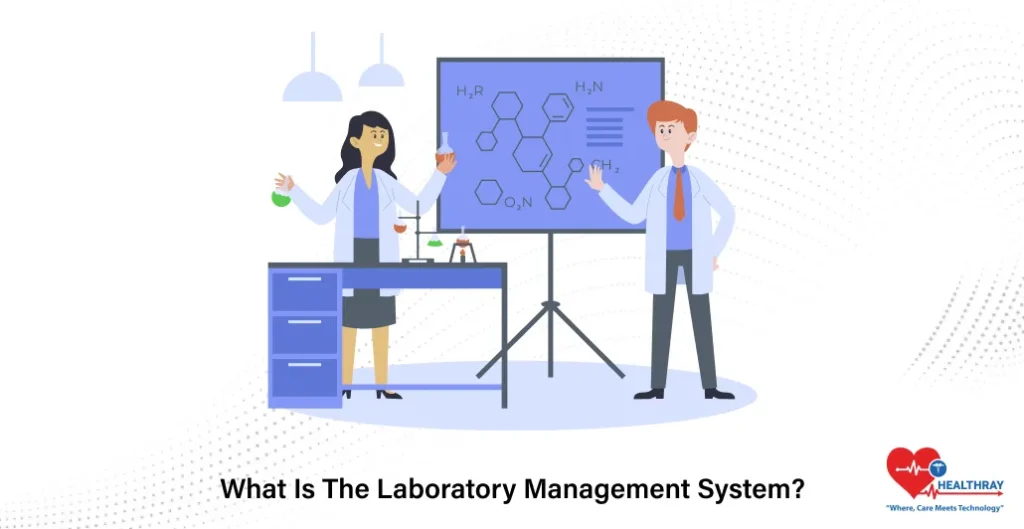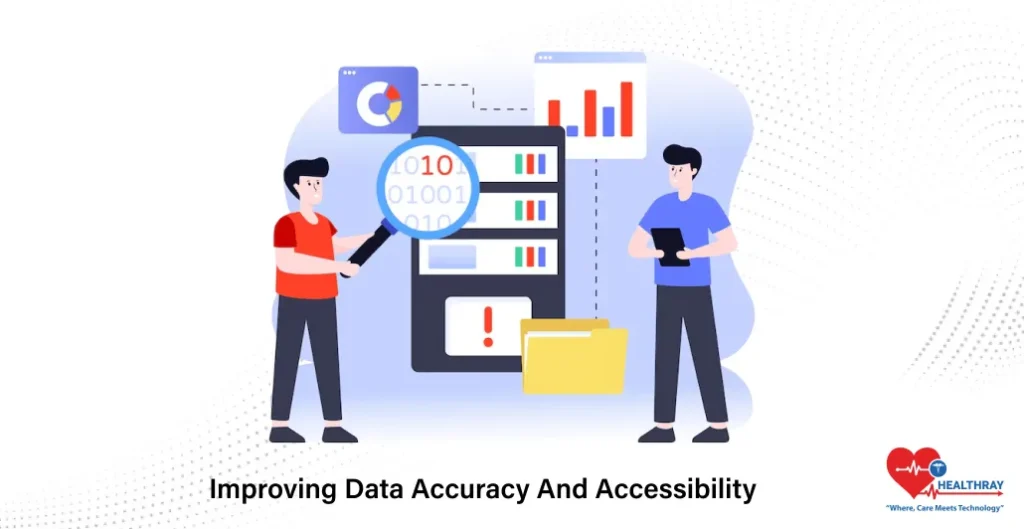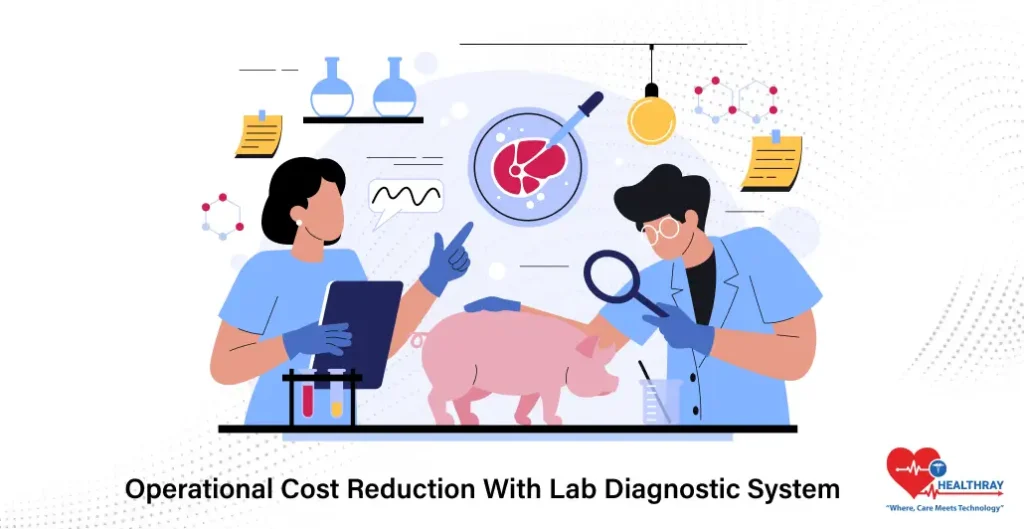Running a lab of diagnostics, one has to handle the data of patients, streamline workflows, manage inventory at all levels, and above all, be in compliance with the ever-evolving rules and regulations. A diagnostic laboratory information system can ease all the aforementioned processes. It is not just a technical tool but a game changer for efficiency and precision.
In this post, we round up some of the key benefits associated with the implementation of the DLMS. Learn how it will be able to transform operations within your lab and cut errors, hence resulting in improved patient outcomes. Whether you’re a lab owner, health administrator, or IT decision-maker, this guide will help you understand why it’s a good idea to invest in this system.
Before understanding the benefits of implementing the diagnostic lab management system software, let’s learn about the lab management system.
What is the Laboratory Management System?

Specialized software for effective control over laboratory operations: management of aliquots, tracking of samples, administration of lab instrumentation, and streamlining up to organizing information from the laboratory. Provides extreme security and simplifies the monitoring of operations.
Work Efficiency through Streamlining
Diagnostic lab daily operations often feel like juggling several tasks all at once. Laboratory Information Management Systems help to automate such repetitive processes, freeing your team up to tackle critical tasks.
How It Works:
It automates a number of functions, including sample collection, labeling, tracking, and report generation. Everything is digitally stored and processed, without relying on manual data entry or paper-based records. Automation reduces bottlenecks, hence minimizing delays, since workflows are continuous through sample intake to result delivery.
Why It Matters:
Smoother workflow equates to quicker turnaround times for patient results. A result of this is increased customer satisfaction, and a boost in the reputation of your laboratory as a reliable one. Moreover, if the workflow is smooth, staff members will be able to focus on quality control and patient care rather than administrative tasks.
Real-Life Example:
Imagine running hundreds of samples a day. Without a DLMS, one or more staff members might misinterpret which tests are outstanding and, therefore, either miss deadlines or commit an error of some sort. With the system in place, notifications and status changes keep all participants up-to-date, so nothing slips through the cracks.
Improving Data Accuracy and Accessibility

Mistakes in data handling are expensive and time-consuming, especially in a diagnostic lab. The DLMS enhances data accuracy by digitizing the whole process, thus reducing human errors.
How It Works:
The DLMS centralizes all data, from patient information to test results, in a secure, digital environment. It interacts with laboratory equipment for direct capture of results with no human intervention. Advanced features include barcoding/RFID for correct sample identification to avoid mix-ups or duplication.
Why It Matters:
Precise information ensures that the right results are delivered at the right time to the patients. To the labs, it means fewer disputes, improved regulatory compliance, and increased credibility. In addition, the immediate access to patient history, test trends, and audit trails due to the centralized system makes decision-making faster and more informed.
Real-Life Example:
Consider the scenario in which the laboratory receives a large volume of samples with similar identifiers. Manual entry, without having a DLMS, would most definitely cause mismatching between the patient ID and the test results. Automated sample tracking and consistent data validation take away the possibility of such errors.
Improving Regulatory Compliance
The biggest challenge faced by any diagnostic lab involves regular compliance with regulatory standards. A DLMS simplifies compliance in that it incorporates features to handle various regulatory requirements, both local and international.
How It Works:
The system ensures that all processes within your lab will follow a standardized protocol. Everything from sample collection to reporting of results is documented in detail as an audit trail, which helps in easy presentation of proof during an inspection. Similarly, most DLMS provide automatic alerts about certification, quality checks, and calibration schedules.
Why It Matters:
Non-compliance with regulatory requirements is just not an option in the field of healthcare; the possible consequences include heavy fines, suspension of operations, and even litigation. Thus, with the help of the DLMS, you are able to stay organized, transparent, and audit-ready without stress, ensuring that your Laboratory remains updated with any change in regulations.
Practical Application:
Imagine preparing for a regulatory audit, not having to work your fingers to the bone, searching and collating much-needed documentation, which may take up to days. Because the system does exist, all records are just a few clicks away, ensuring smooth processing during audits and saving you precious time.
Improving Patient Satisfaction and Building Trust
Success of any laboratory depends on the trust and satisfaction of patients, so a DLMS directly contributes to them by providing fast, accurate, and transparent service.
How It Works:
The system will allow easy access to the records of patients, and that ensures timely and accurate delivery of results. Several DLMS platforms further facilitate online access by means of secure patient and referring doctor portals. This added convenience improves the overall experience of all involved.
Why It Matters:
When patients and physicians trust your lab for accurate on-time results, credibility and loyalty increase. Increased transparency-such as in real-time sample progress updates-helps reassure the patient that his or her health is in good hands.
Real-Life Example:
Consider a scenario in which a patient needs urgent test results in order to take important treatment decisions. Without a DLMS, manual delays in processing might prove extremely dangerous for the patient. With a DLMS, the lab can process the sample, review the results, and send them through secure channels quickly enough for timely care.
Operational Cost Reduction With Lab Diagnostic System

Operating a diagnostic lab can be a very costly affair, as processes tend to be error-prone, inefficient, and even redundant. A DLMS helps in smoothening operations and thus brings down overall costs.
How It Works:
The system automates manual tasks, such as data entry, billing, inventory tracking, and reporting. Automation reduces the possibility of errors that may lead to costly re-tests or disputes. Inventory management features track reagent usage and supply levels to avoid overstocking or shortages.
Why It Matters:
Cost savings provide flexibility for the lab to invest in better equipment, expand their services, or lower their pricing in order to stay competitive. Removal of inefficiencies allows labs to deliver higher-quality services without misallocating much-needed resources on expensive overheads.
Real Example:
A laboratory with no automated inventory system frequently ran out of critical supplies. This can delay research and, sometimes, very expensive purchases are made at the last minute. The DLMS ensures real-time monitoring of the level of supplies on hand to prompt timely restocking and avoid emergency orders.
Supporting Scalability and Future Growth
It is often challenging to handle an increased workload and expanded services as your diagnostic lab grows. In such scenarios, the DLMS offers the much-needed flexibility and tools to scale operations with ease.
How It Works:
The system is designed to handle increasing volumes of data, integration of new equipment, and accommodation of additional workflows. Multi-location operations can be supported with centralized control/monitoring of all your branches. Many DLMS platforms are also modular in nature, so you can scale up with add-on functionalities as your lab grows.
Why It Matters:
Without a robust system in place, scaling just becomes a surefire recipe for inefficiency, errors, and staff burnout. A DLMS will provide room for growth without giving way on quality or performance. This simply positions your lab to take advantage of all emerging technologies and trends to keep you ahead in the competitive landscape.
Real-Life Example:
Take, for example, a laboratory that needs to expand its operations by opening a branch in another city. Indeed, a DLMS would save them from the chaos in the coordination of workflow, inventory, and reporting between sites. A DLMS allows for seamless expansion by providing a centralized system where consistency in process is assured and data is appropriately shared.
Conclusion
Implementing a Diagnostic Laboratory Management System is not about upgrading your technology, but about changing the way your laboratory works. Besides workflow efficiency, data accuracy, compliance, and cost reduction belong to the top concerns of any diagnostic lab today.
Through the adoption of a system that streamlines operations, improves patient satisfaction, and charts future growth, your laboratory is made more competitive and reliable. From daily routine tests to scaling up for emerging demands, the Hospital Management System prepares you to meet the demands for quality and consistency.





